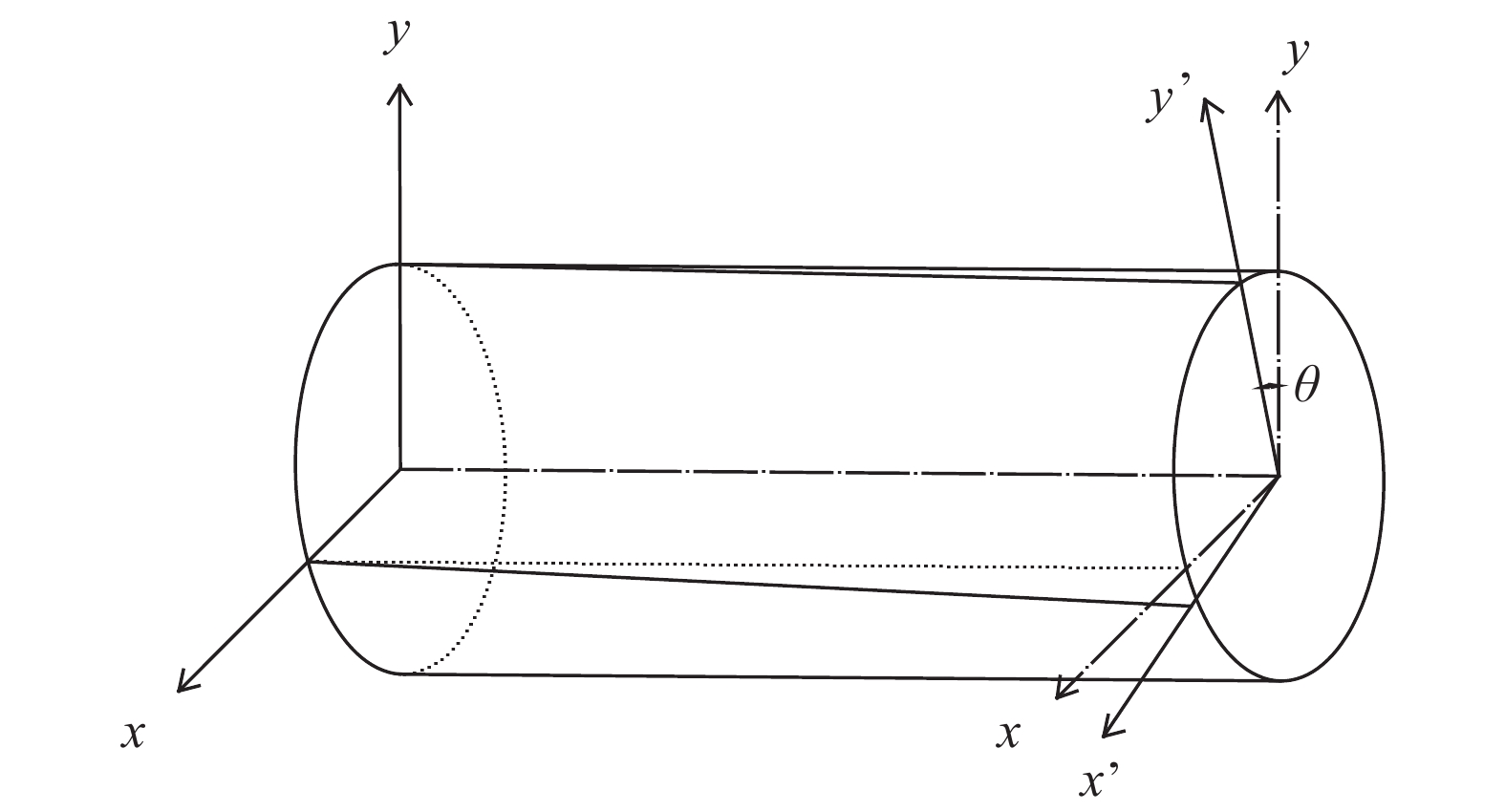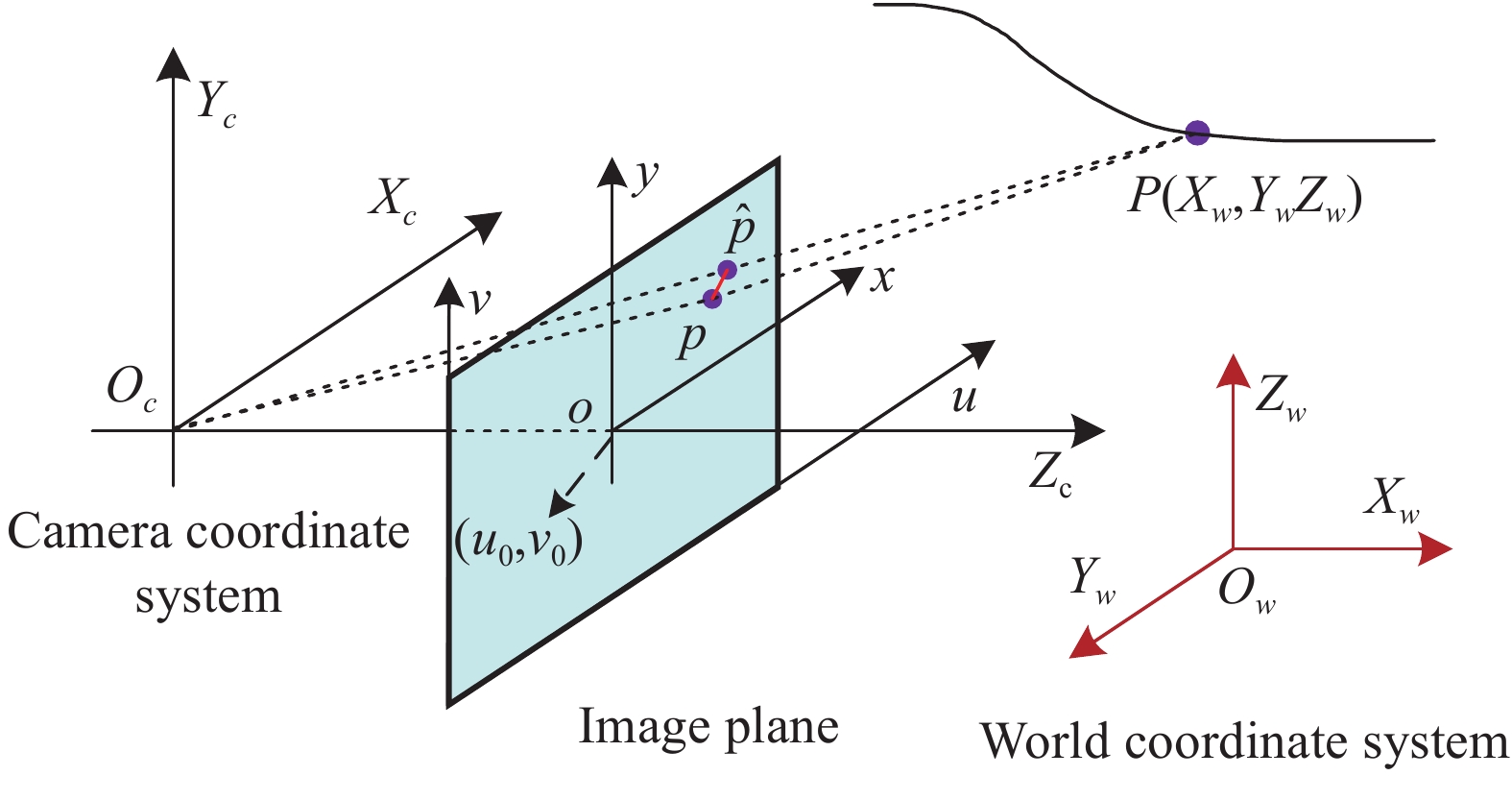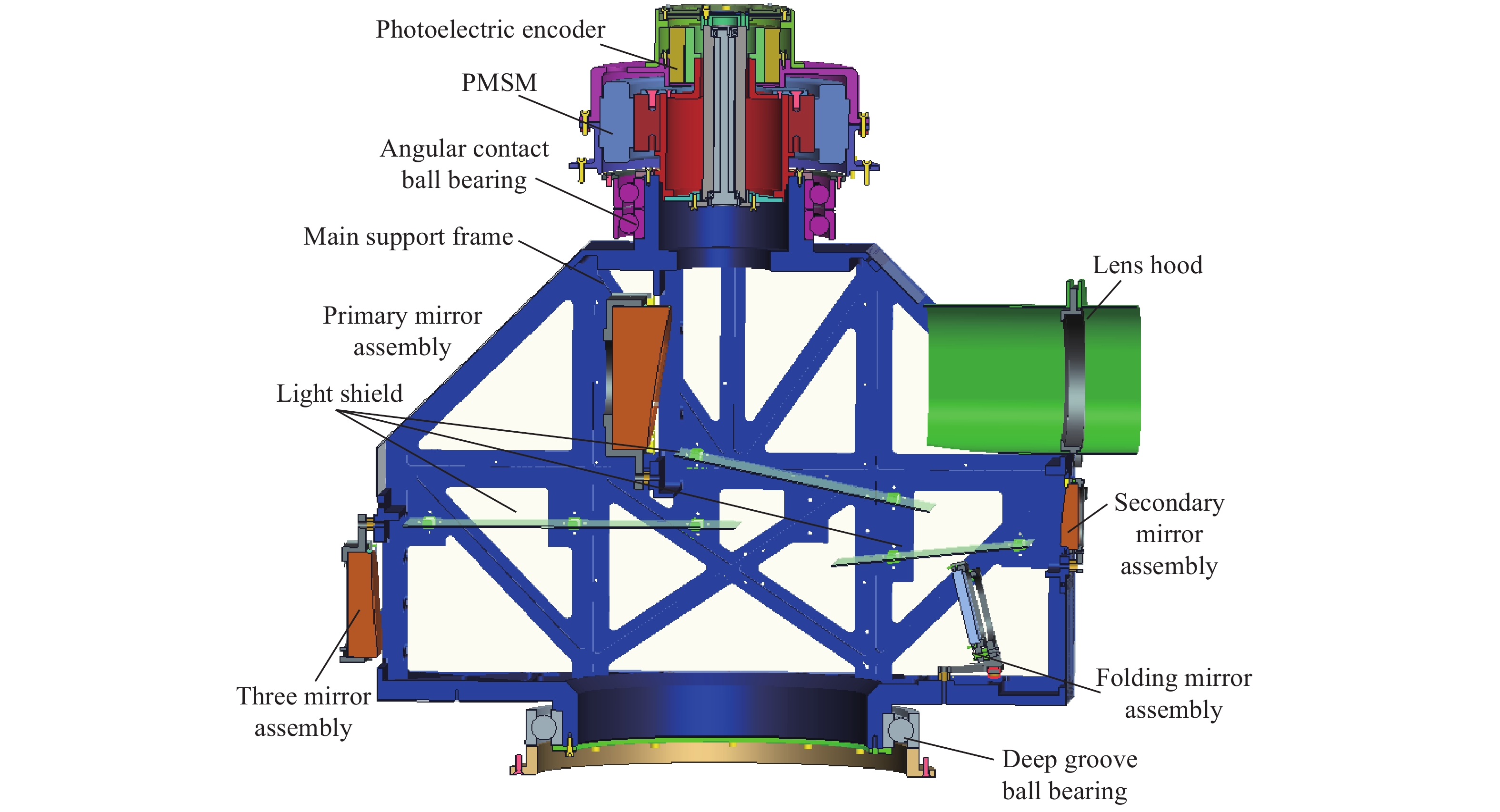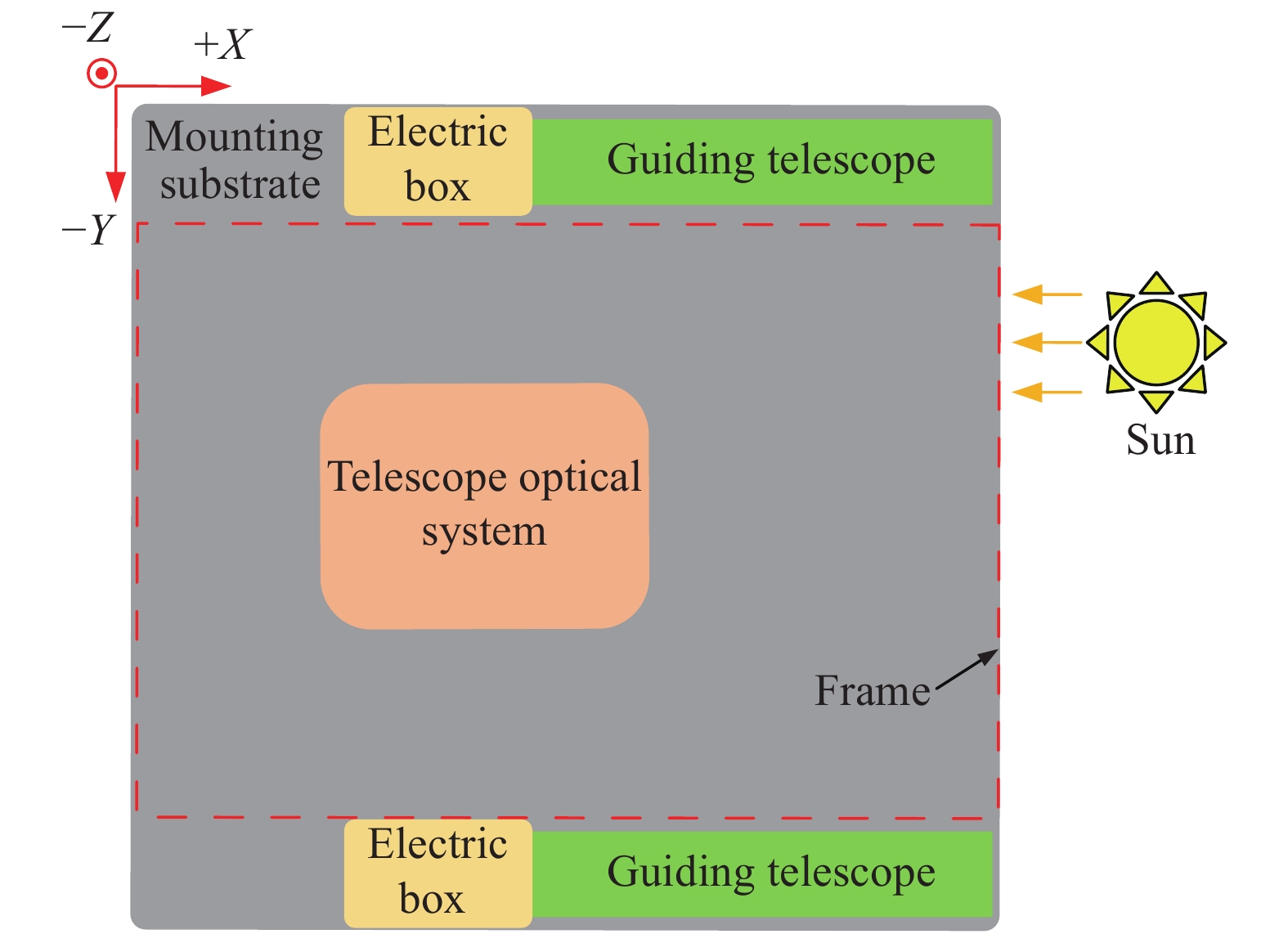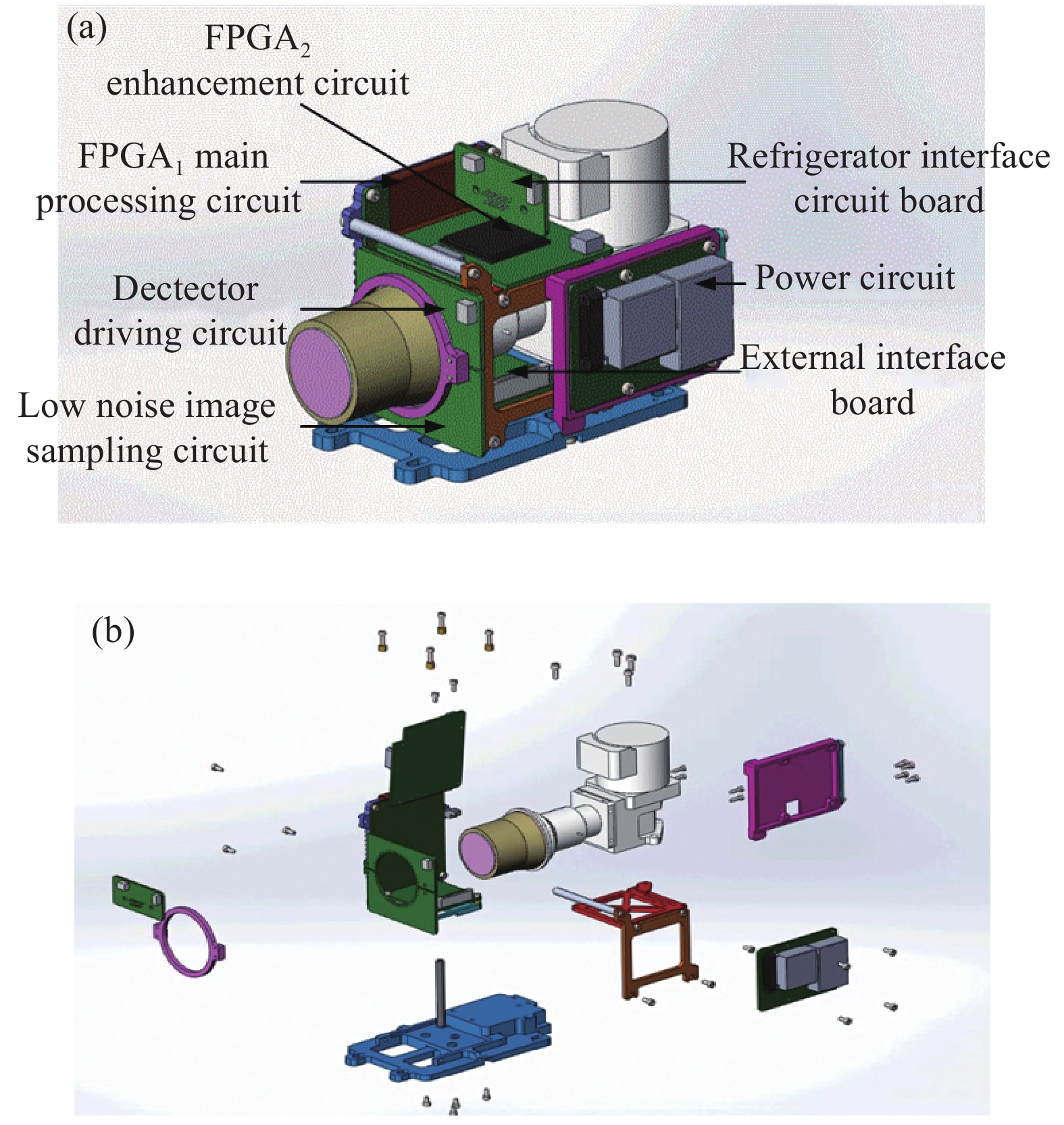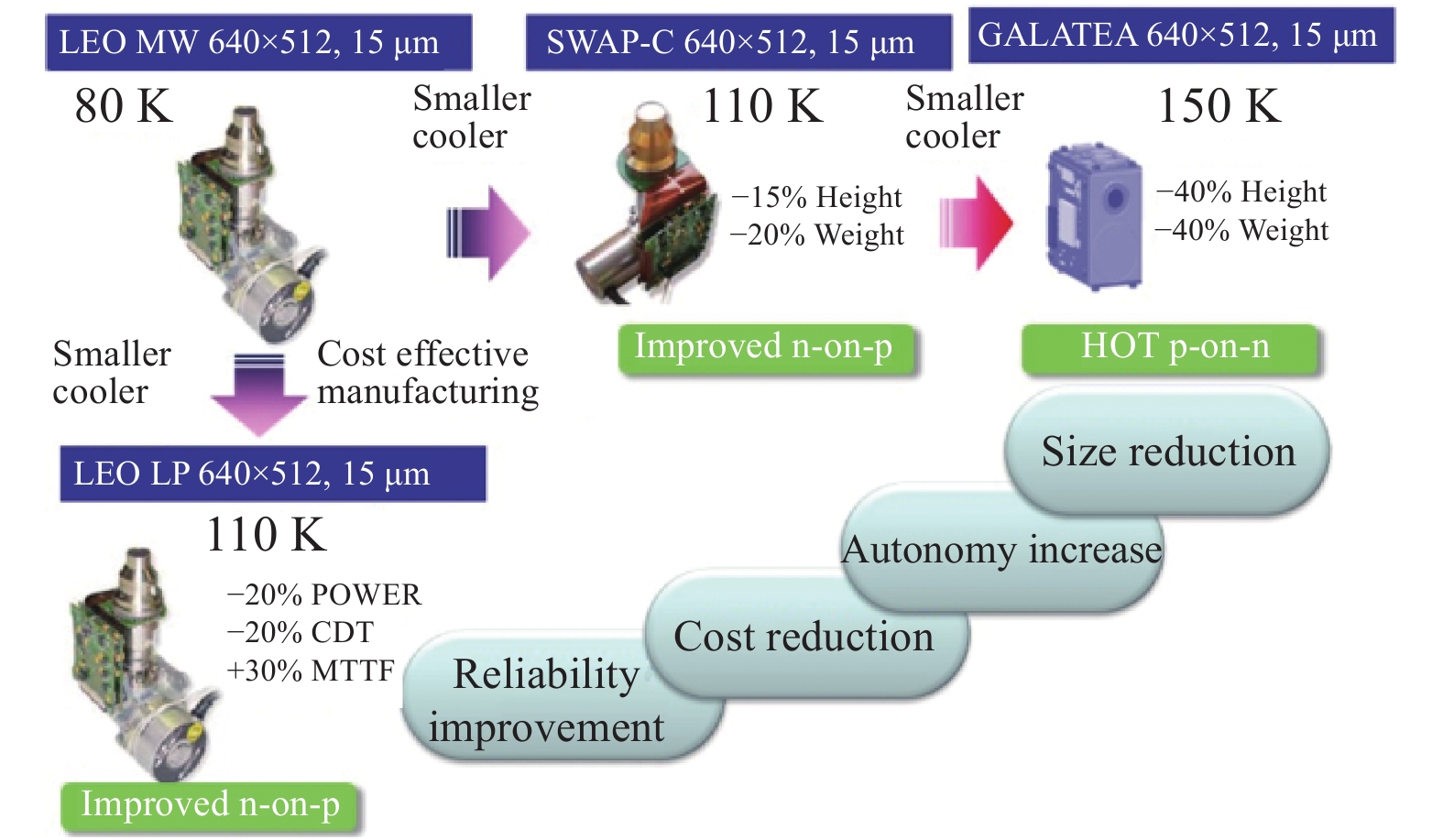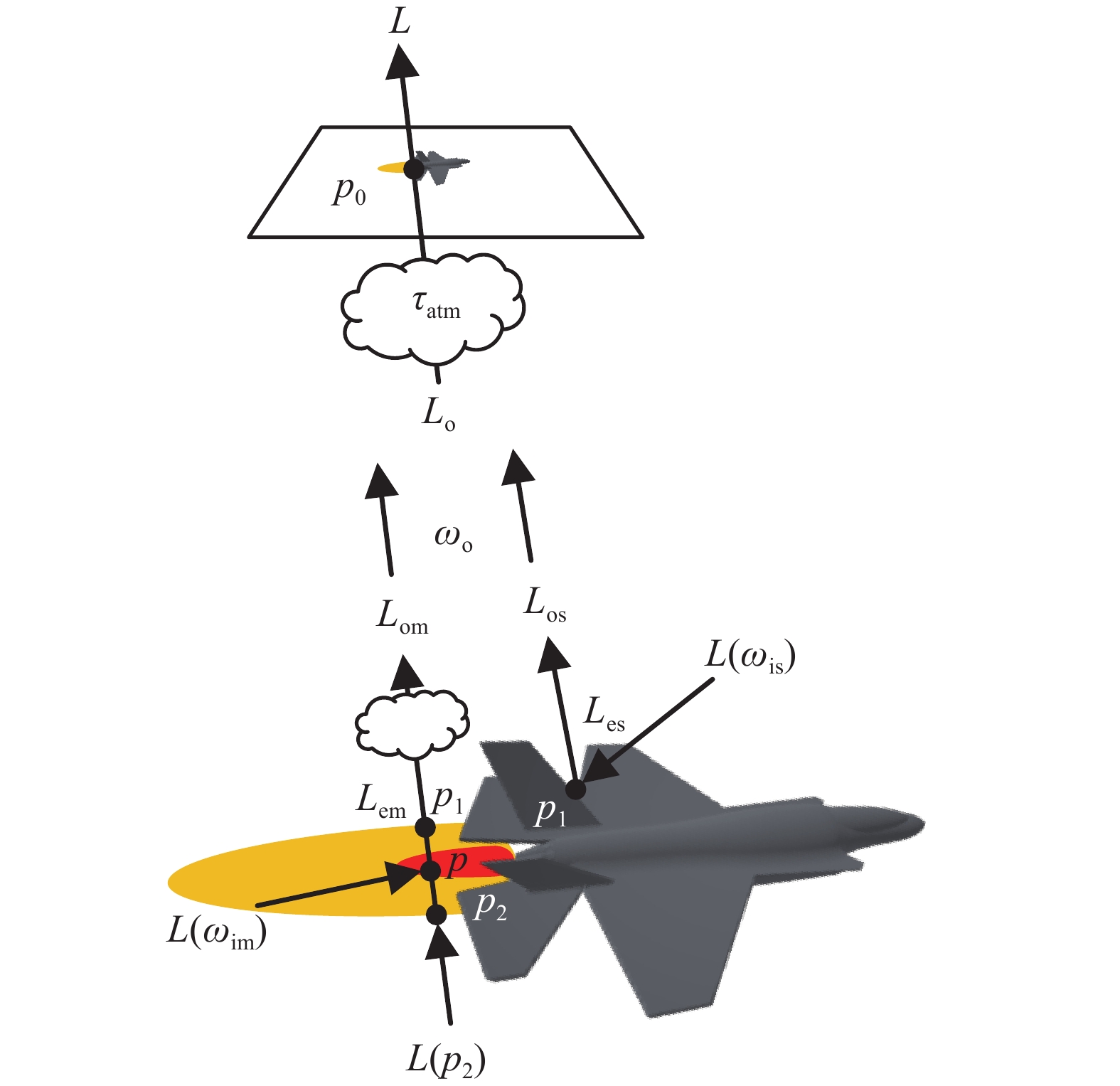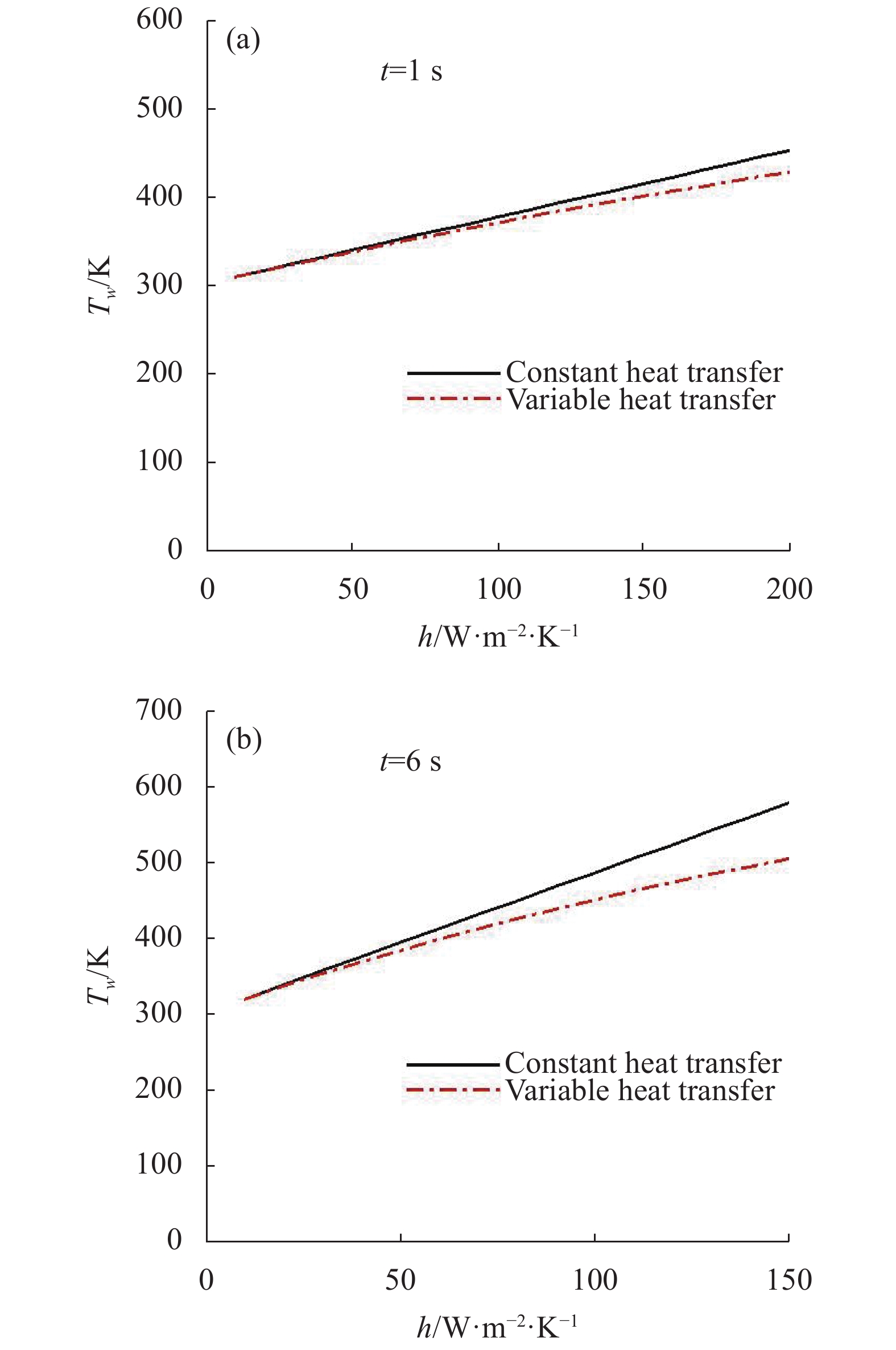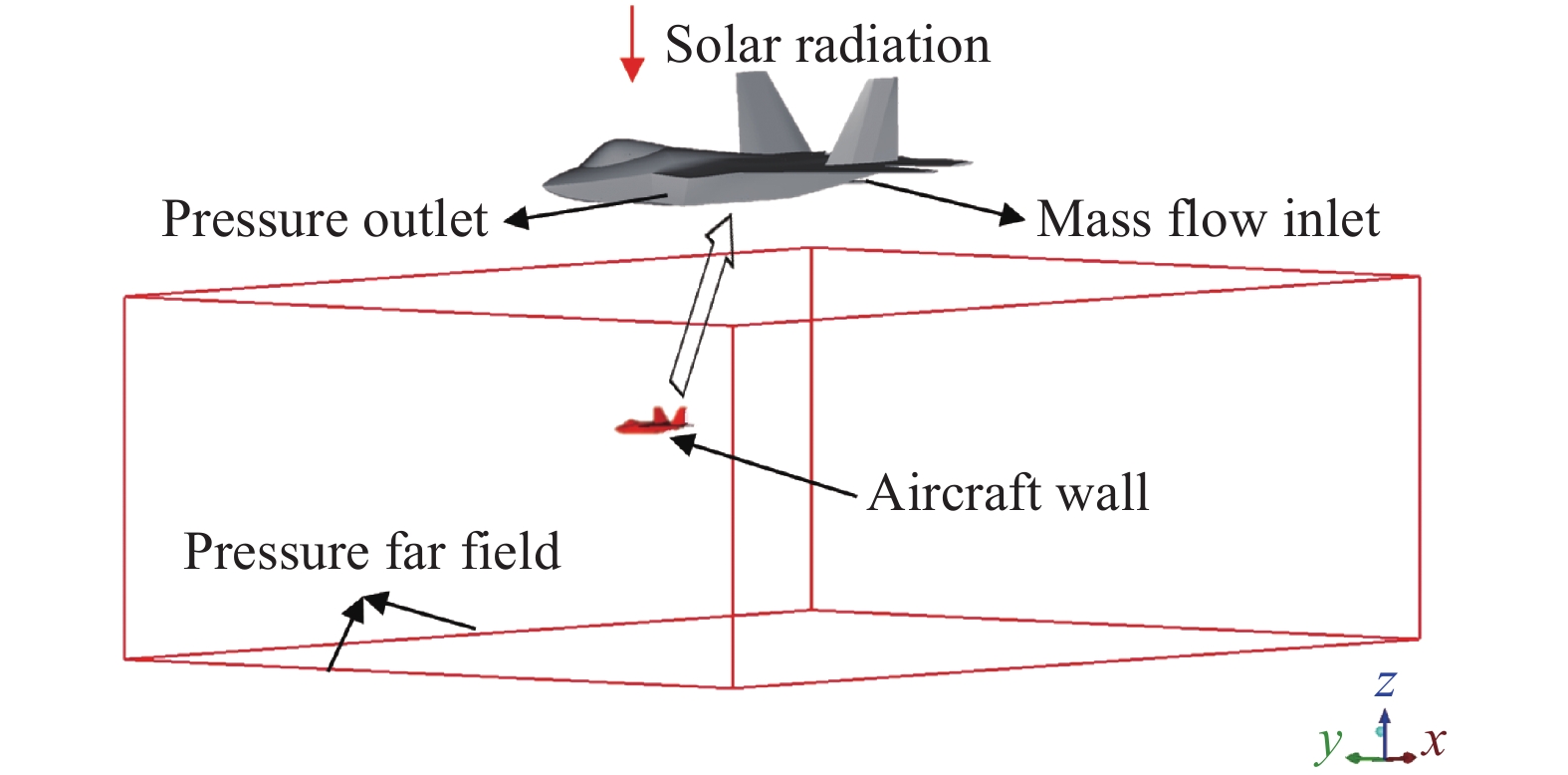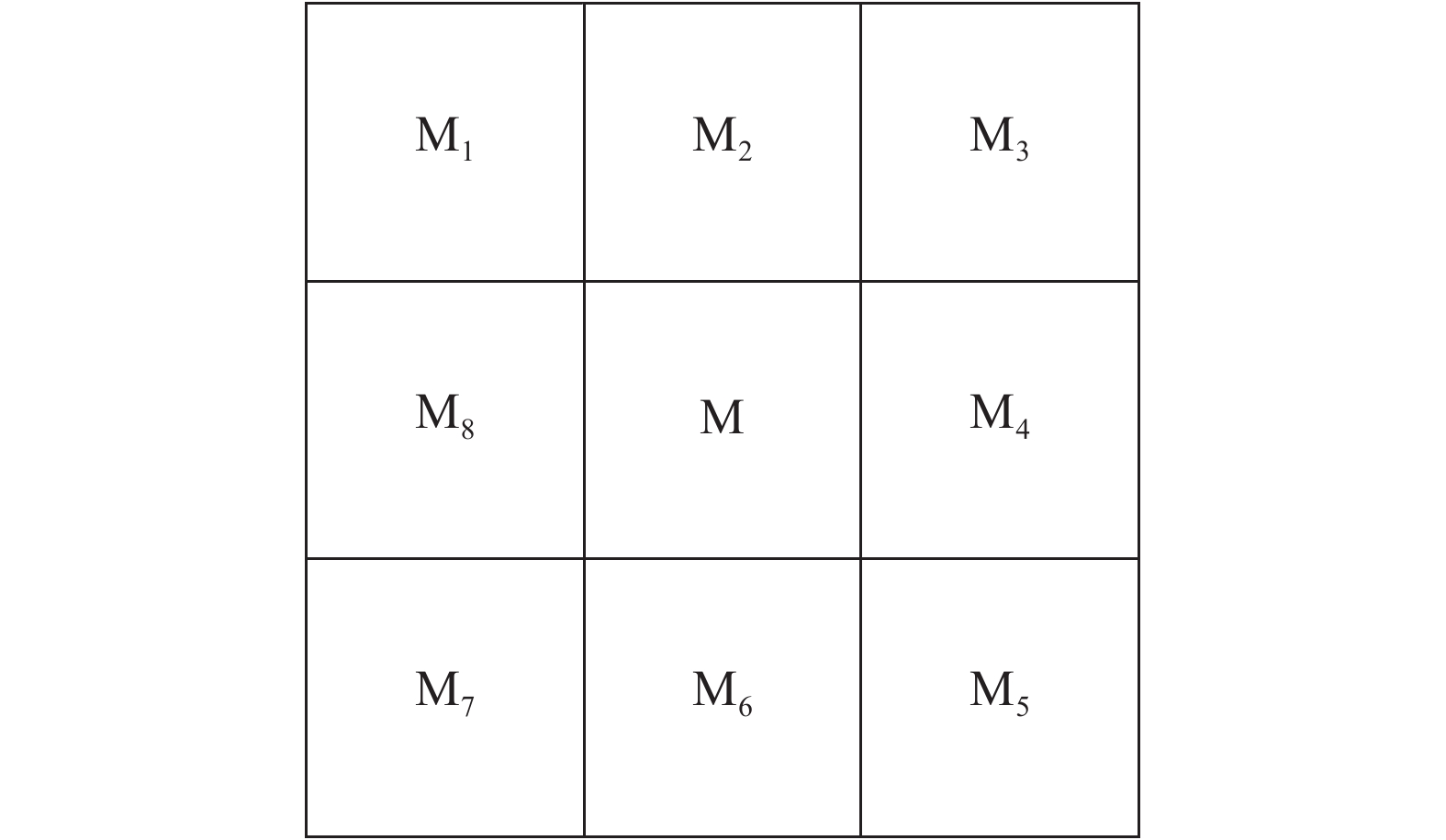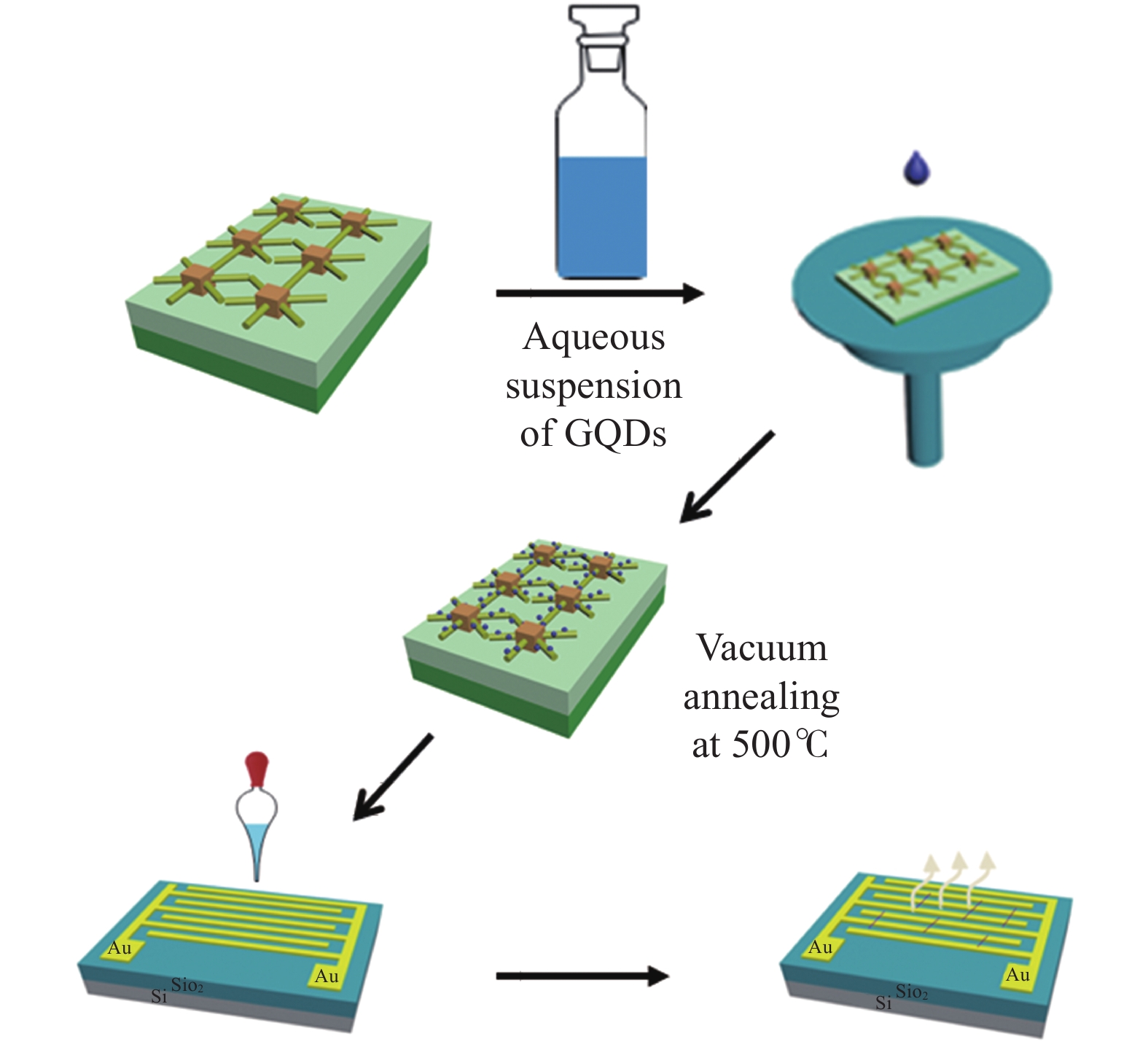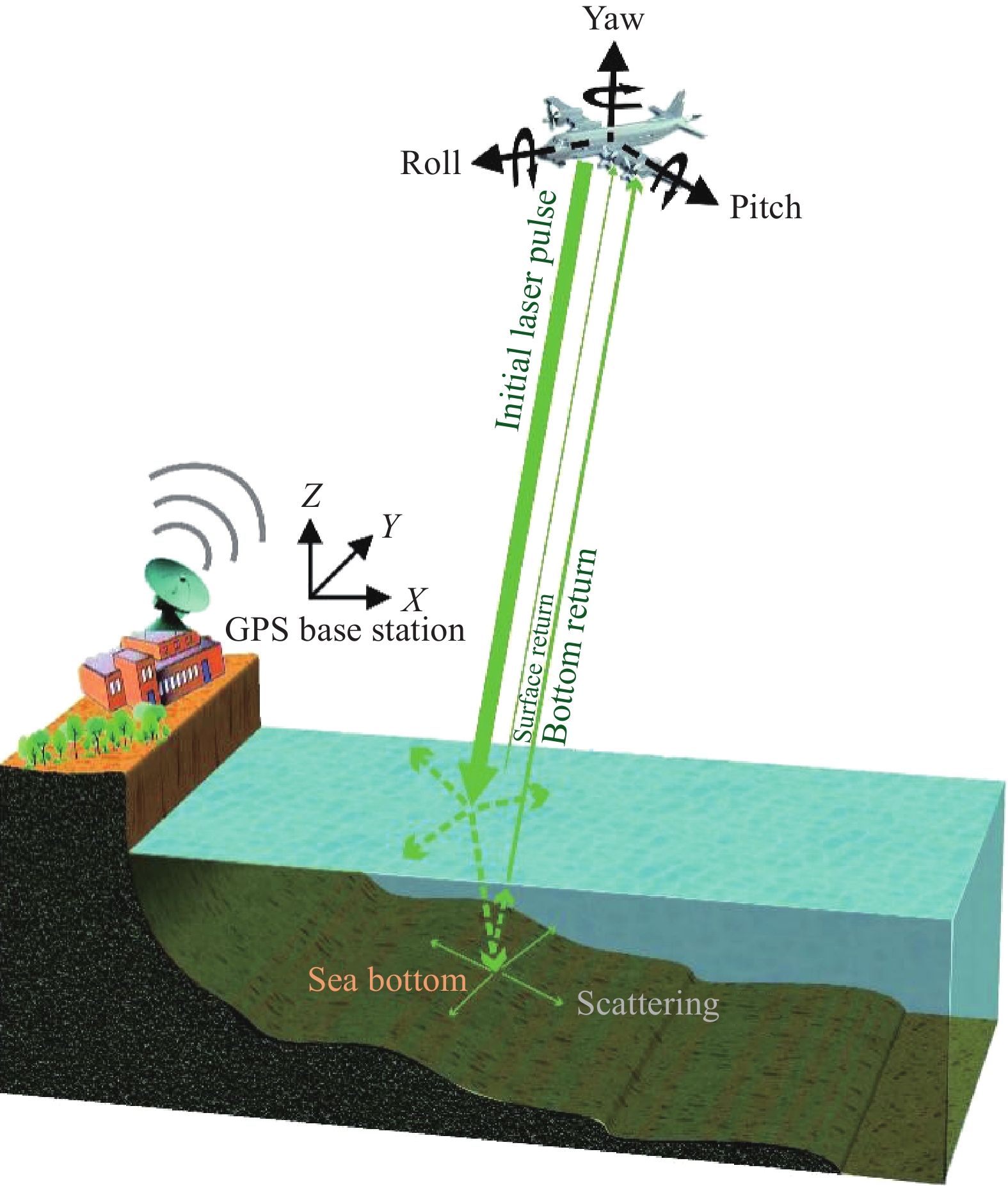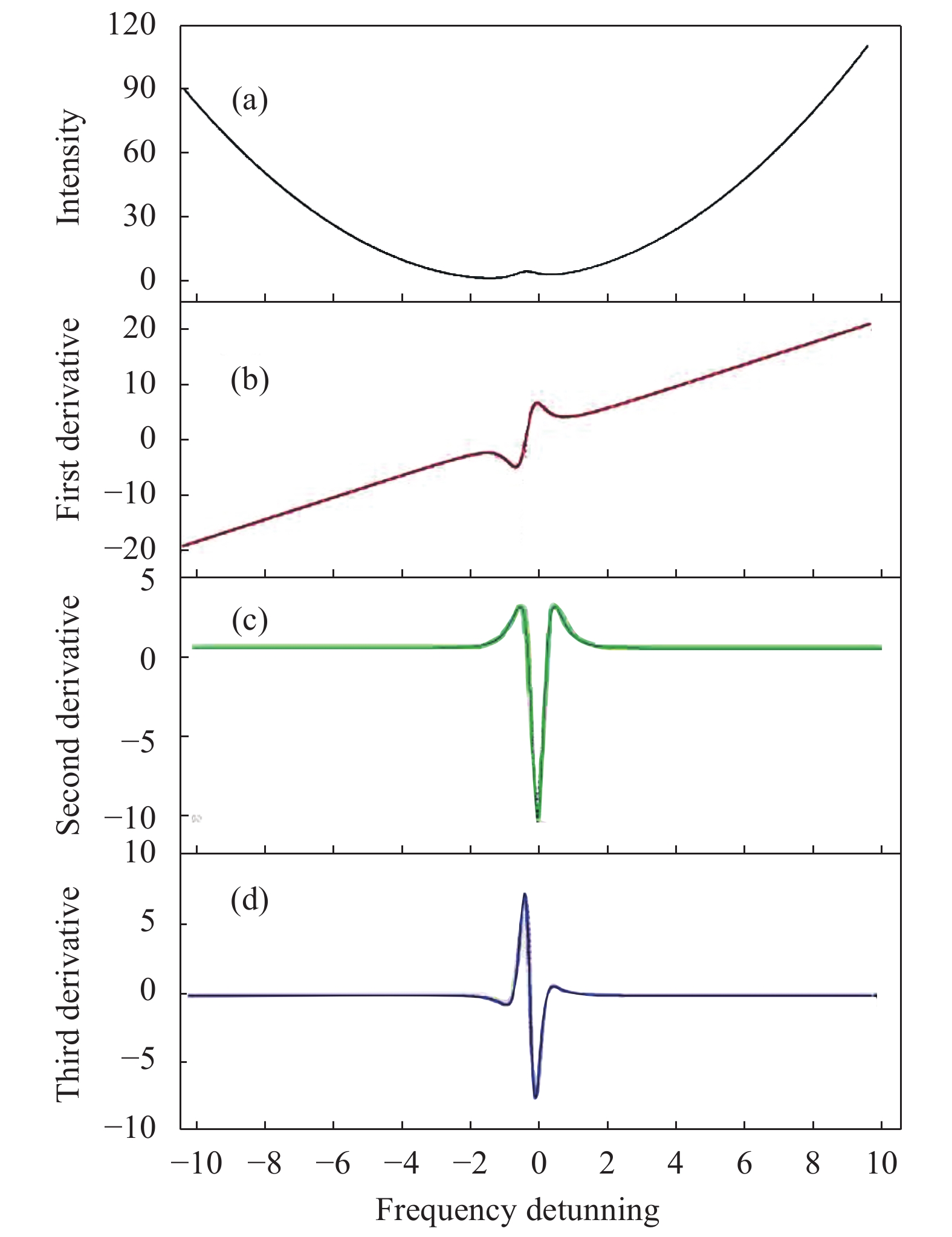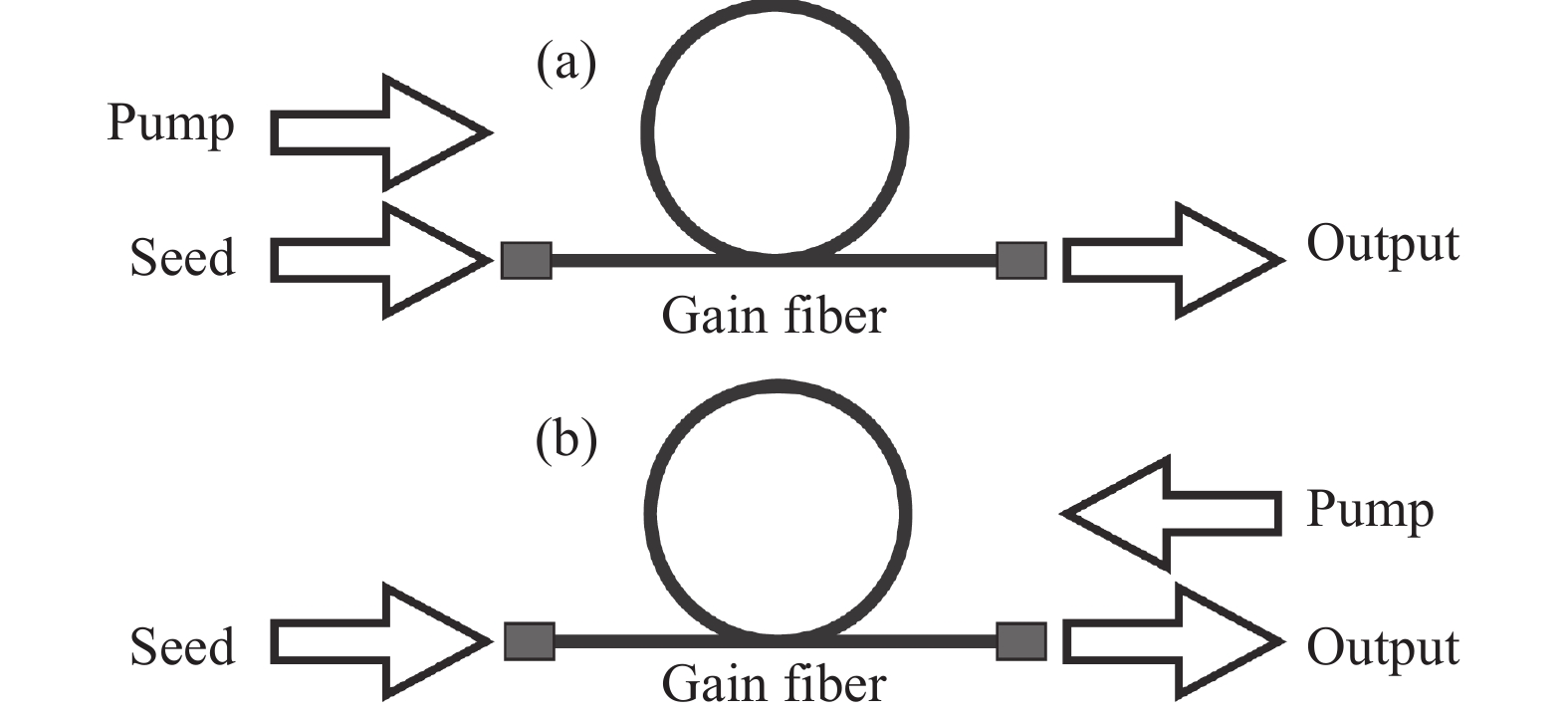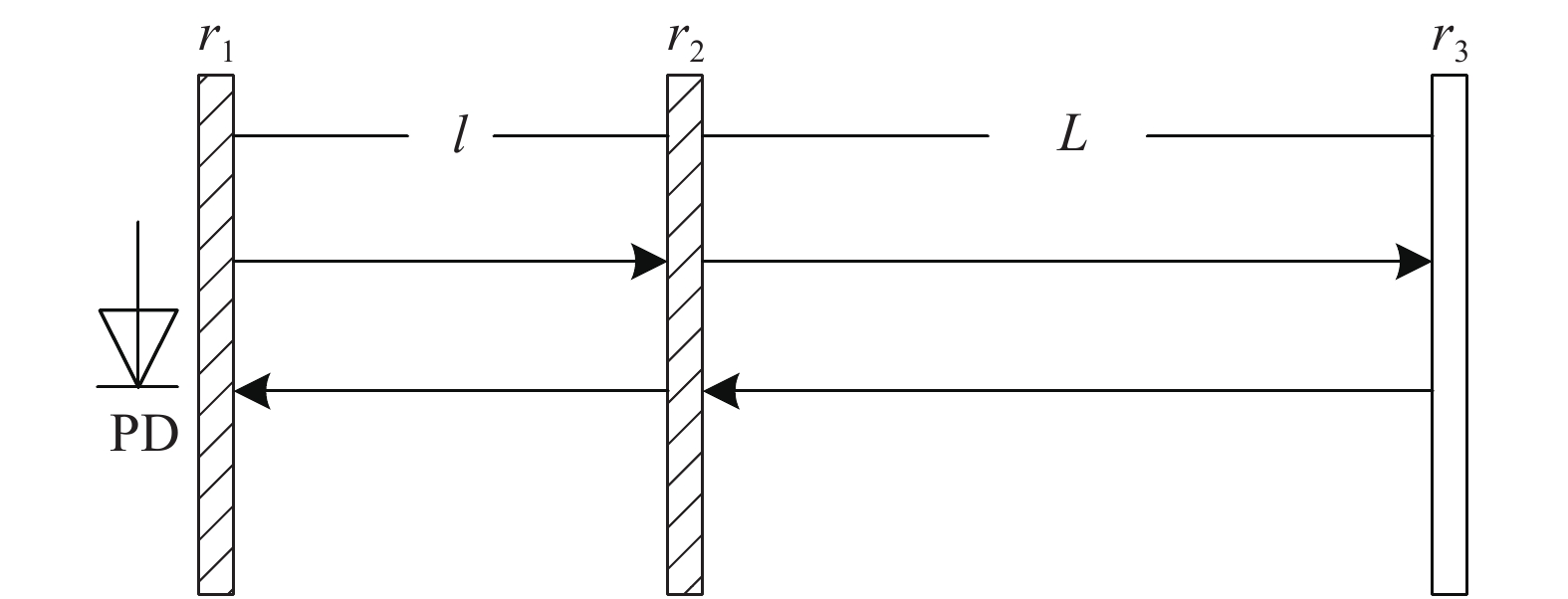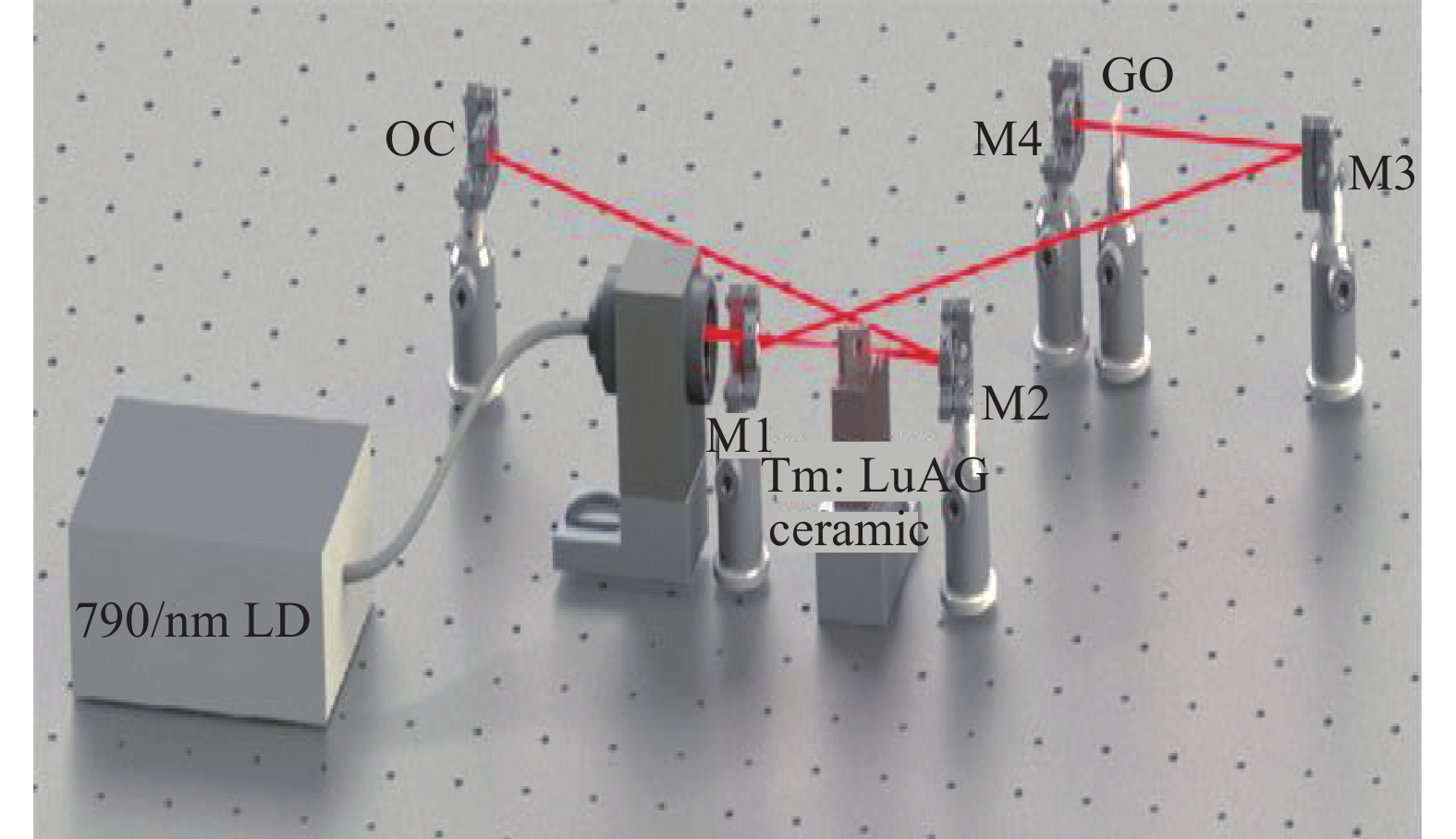2021 Vol. 50, No. 4
2021, 50(4): 20200265.
doi: 10.3788/IRLA20200265
The elastic modulus of biological tissues and materials is the key factor to determine their mechanical properties, which is very important for biomedicine and material monitoring. A method for measuring elastic modulus based on virtual image phase array was proposed. Combining virtual image phase array with confocal microscopy system, the Brillouin spectrum frequency shift of biological tissues and materials could be obtained quickly, and then the elastic modulus could be calculated. Firstly, the relationship between the elastic modulus and Brillouin spectrum frequency shift was analyzed theoretically; Then, the principle of the virtual image phase array and the components of the system were introduced; Finally, the spectrum test of the sample material was performed, and the spectra of polyethylene, silica glass, and polymethyl methacrylate (PMMA) were measured, the longitudinal elastic modulus M was calculated to be 7.23 GPa, 83.4 GPa and 8.92 GPa, respectively, and the Brillouin spectral image of PMMA was measured. The results show that the cascade use of the virtual image phase array and the diffraction grating can improve the order overlap phenomenon of the etalon, and increase the resolution and acquisition rate of the Brillouin spectrum. The laser and backscattering light suppression module designed by this system can significantly improve the contrast of the Brillouin signal which is of great significance in material properties, structure monitoring and biomedicine.
2021, 50(4): 20200239.
doi: 10.3788/IRLA20200239
The magnetic non-reciprocity error of fiber coil is one of the main factors that restrict the application of high-precision IFOG, and the error is related to the strength of magnetic field and the twist rate of fiber. The magnetic field sensitivity of fiber coil is more than 10 (°)·h−1·Gs−1 due to the twisting of the fiber, even if permalloy is used to shield the magnetic field, the shielding effectiveness can only reach about 30 dB, which cannot meet the requirements of high-precision IFOG. The influence of the connection gap between shielding materials on shielding effectiveness was analysed by an equivalent circuit model and finite element simulation, the influence of the twist rate on the magnetic field sensitivity was deduced by formula. Through these analyses, the improvements were proposed that changed the connection of shielding materials from screw connection to laser welding and made the fiber de-twist. Through the measurement of fiber de-twist, the magnetic field sensitivity of the fiber coil was reduced by 89.3%; Through the improvement of laser welding, the shielding effectiveness was improved from 31 dB to at least 64 dB, the magnetic field sensitivity was reduced from 0.026 5 (°)·h−1·Gs−1 to less than 0.000 4 (°)·h−1·Gs−1, and the bias stability of the IFOG in different temperature was improved by more than 7.5%. These improvements can improve the precision of the fiber coil in the magnetic field and temperature environment, meeting the performance requirement of high-precision IFOG.
2021, 50(4): 20200290.
doi: 10.3788/IRLA20200290
Optical systems equipped with focusing ability are crucial for space exploration. The internal focusing optical system was designed which was based on the vertical deflection of the freeform surface. Specifically, the system used a special structure of the freeform surface to establish a lens group. It used the zoom ability of the vertical deflection to improve the imaging location thus adapting to different conditions such as wide range imaging or diverse space environments. The zoom theory of the freeform lens group was analyzed, and zoom lens of freeform was successfully applied to the optical system whose focal length was 100 mm. Then the imaging quality and displacements were analyzed when the object and image distance were changed accordingly. The results show that the Modulation Transfer Function (MTF) of the optical system is better than 0.3 at the Nyquist frequency which means satisfying quality of image. The system is stable in imaging and can provide compensation on the micron scale.
2021, 50(4): 20200280.
doi: 10.3788/IRLA20200280
Aiming at the problem of camera calibration with multi-parameters in space target pose measurement, a novel calibration method based on dual update strategy weighted differential evolution particle swarm optimization was proposed . An adaptive judgment factor was constructed to control the usage proportion of weighted differential evolution (WDE) algorithm and particle swarm optimization (PSO) algorithm in each iteration process, which allowed the PSO or WDE algorithm to update individuals according to the probability laws. Moreover, through the information exchange mechanism, the individual obtained by the WDE operation was adopted to guide the individual evolution process operated by PSO algorithm. The proposed WDEPSO algorithm could ensure the diversity and effectiveness of the individual evolution of the population, and it was coupled with the camera nonlinear calibration model and parameters. Consequently, the proposed method could simultaneously realize the combined nonlinear and global continuous optimization, which overcomed the local convergence problem caused by the limited feature points arise from the saturated light intensity of the target space ambient. Experiments suggest that the objective function value optimized by the WDEPSO method is smaller, and the proposed method obtains the higher calibration accuracy. The standard gague measurement error obtained by the calibration parameters is less than 0.40 mm, the reconstruction attitude accuracy of the target under large angular motion is better than 0.30°, as well as the repeatability measurement results are stable.
2021, 50(4): 20200286.
doi: 10.3788/IRLA20200286
In the optimization design of the flexible hinge in the fast steering mirror, in order to ensure the accuracy and stability, the rotational flexibility of the working axis and the rotational rigidity of the non-working axis should be increased as much as possible. Taking the elliptic arc flexible hinge in a fast steering mirror as the research object, firstly the least squares method and the integral method were used to derive the flexibility formula of three rotation axes. Compared with the Finite Element Analysis (FEA), the relative error was less than 6.8%, the problem of complex integration calculation in torsional flexibility of rectangular section was solved. Secondly, based on the improved non-dominated sorting genetic algorithm (NSGA-II) algorithm, the elliptic flexible hinge was multi-objectively optimized, met the design target and the optimal solution and solution were efficiency improved significantly. The efficiency of Pareto solution was improved by 14.3% compared with the Multi-Island Genetic Algorithm (MIGA) method, and improved by 25% compared with Particle Swarm Optimization (PSO). Finally, the optimization results were verified by FEA. The relative error was less than 6.5%, which was a good agreement.
2021, 50(4): 20200296.
doi: 10.3788/IRLA20200296
In order to suppress influence of the periodic interference signal’s fluctuation on the rotating telescope scanning system speed stability and imaging effect, the interference compensation control was carried out by establishing the interference torque model and error compensator. Firstly, it was obtained that the periods of the disturbances were time-varying but position-fixed through experiment. Secondly, by measuring the current of quadrature axis ${I_q}$ , a set of disturbance torque model acquisition system based on Fourier theory was established, and the specific expression of the disturbance torque model was extracted through eight steps. Then, the periodic error was compensated according to the expressions through four steps. Finally, the effectiveness of control compensation was verified by the actual system. The experimental results show that angle error of the telescope can be reduced to less than ±5.5″ of the angle error every 10 ms when the telescope is running at the speed of 68 (°)/s, and the reduction amplitude is more than 30%, which can meet the requirement of ±7″, and the speed stability is greatly improved.
2021, 50(4): 20200294.
doi: 10.3788/IRLA20200294
Aiming at the thermal characteristics of space solar telescope with long working time and harsh working environment, the thermal design of space solar telescope frame and guiding telescope under extreme working conditions was carried out. Through the finite element simulation analysis and thermal equilibrium test under high and low temperature conditions, the thermal analysis and thermal equilibrium test results of the frame and the guiding telescope were compared. The temperature was controlled at 22 °C, and the temperature fluctuation of each component under the same condition was less than 1 °C, which verified the correctness of the thermal control design. At the same time, the power difference between the finite element simulation of the frame and the guiding telescope and the thermal equilibrium test was 1.2 W at high temperature and 0.8 W at low temperature. The simulation analysis is consistent with the thermal equilibrium test, and the analysis is correct and effective, which ensures the normal operation of the telescope under complex working conditions. It provides a theoretical basis for improving the reliability and thermal design optimization of the space solar telescope module and solar tracking optical system.
2021, 50(4): 20200338.
doi: 10.3788/IRLA20200338
Based on the visual advantages of bionic compound eyes, the research progress of bionic compound eyes was analyzed, and the imaging principle of compound eyes and the structure of some insect compound eyes were studied. According to the structure of the biological compound eye, a hexagonal closely spliced curved micro-lens array and image transfer system were designed. At the same time, in order to prevent the crosstalk of imaging beams between adjacent sub-eyes, an aperture array with a single aperture of 1.5 mm in length was designed to realize single-channel imaging of each sub-eye. According to the principle of pupil connection, the micro lens array and the conversion system were combined and optimized. The diameter of the entire compound eye was 8.66 mm, the field of view was 121°, the diameter of each sub-eye was 500 μm, and the field of view of the sub-eye was 6°. At 90 lp/mm, the MTF value of the compound eye system was greater than 0.3, and the RMS spot radius were less than the radius of the Airy disk, the imaging quality of the system meet the requirements of the design index. In order to met the requirements of 3D additive manufacturing process, the mechanical structure of the compound eye system was designed. The tolerance analysis result shows that the system structure meets the preparation requirements of 3D printing technology.
2021, 50(4): 20211023.
doi: 10.3788/IRLA20211023
As infrared devices and technologies develops, the demand for megapixel mid-wave infrared imaging components of various night vision systems is rising. The megapixel mid-wave infrared imaging component based on the domestic 1280×1024 medium wave (15 μm) infrared HgCdTe detector was developed, which took the detector and the Dewar's own envelope as the benchmark and made a breakthrough in small form-factor and lightweight integrated design. The component with the size of 155 mm×95 mm×95 mm and the weight of 1400 g were considered to collect and process the information from the large area of Infrared Focal Plane Arrays (IRFPA). Thus, a low-noise image acquisition and processing hardware platform based on dual FPGA architecture was brought up, which supported SDI/Cameralink interface output. In the section of algorithm, the optimized non-uniformity correction (NUC) algorithm of the focal plane pixel response and the acquisition circuit, as well as the contrast limited adaptive histogram equalization (CLAHE) method compared with traditional image enhancement technologies were proposed. In addition, blind pixel replacement, denoising, latitude reduction and further procedures were implemented to make the image quality improving. Test results show that the noise equivalent temperature difference (NETD) of the component is lower than 30 mK, and the detector performs stably at the temperature from −40 ℃ to 60 ℃. The proposed improved algorithm is fruitful in raising the quality of both thermal imaging and infrared system performance.
2021, 50(4): 20200328.
doi: 10.3788/IRLA20200328
Based on the current development direction of infrared detector technology. The advantages of HgCdTe high operation temperature (HOT) infrared detector were analyzed in terms of module weight, shape size, power consumption, environmental adaptability and reliability from the perspective of application requirements of HOT infrared detector. The technical route and research status of HgCdTe HOT infrared detector in Europe and America were summarized. From the perspective of device dark current and noise mechanism, the change of dark current and noise at different operating temperatures and their effects on device performance were analyzed. The basic principles of the process optimization HgCdTe devices based on Hg vacancy n-on-p structure, extrinsic doped HgCdTe HOT devices based on in-doped p-on-n structure and Au doped n-on-p structure, nBn based HOT devices based on barrier structure and non-equilibrium mode HgCdTe HOT devices based on thermally excited carrier auger suppression in absorption layer were summarized. The performance of HgCdTe HOT devices with different technology routes and the technical difficulties in the preparation of detectors were compared and analyzed. Based on the comprehensive analysis of the performance and technical difficulties of HOT devices with different technology routes, the future development direction of HgCdTe HOT device technology was prospected. It is considered that the fully depleted device based on low concentration doping absorption layer has better development potential.
2021, 50(4): 20200240.
doi: 10.3788/IRLA20200240
After four generations of development, the infrared air-to-air missile has developed from the attack mode of trailing pursuit to a high-performance tactical weapon with omnidirectional attack, over-the-shoulder launch and interception after launch, and its guidance system has also gone through the development process from unit, multiple to IIR at present. On account of the infrared imaging air-to-air missile anti-jamming problems, the composition of imaging guidance system, the principle of the angle tracking of the target in the imaging stage was introduced firstly, and the relevant anti-jamming methods that usually used at this time. Second, on the analysis of the application of intelligence technology requirement for air-to-air missiles in the course of actual combat, current complex air combat environment composition and infrared imaging counter-countermeasures against natural background as well as artificial interference sources, six anti-jamming methods, each dealing with a specific interference problem, were proposed from intelligent perception and guidance, intelligent guidance and control and intelligent cooperation, and the brief introduction was carried on. Some part of the simulation results show that above methods can achieve good effects on their respective anti-jamming problems.
2021, 50(4): 20200231.
doi: 10.3788/IRLA20200231
Au-doping is one of the approaches to improve the performance of HgCdTe photovoltaic infrared detectors. The minority-carrier lifetime and diffusion length in HgCdTe could be improved by replacing the intrinsic Hg-vacancy with the doped Au. The Au-doping HgCdTe films were grown by liquid phase epitaxy method. The concentration of the doped Au was about 8×1015/cm3. A Hg-rich annealing technique was applied to suppress the Hg vacancies in the film and the Hg-vacancy concentration of 1-2×1015/cm3 could be achieved. The acceptor energy level in the annealed material was 8-12 meV measured by the temperature dependent Hall method, which was related to the annealing condition. The IR Focal Plane Array(IRFPA) of 14 µm cut-off wavelength was fabricated using the combination of Au-doping material and Ion-implanting technique. The results show that the replacement of Hg-vacancy with Au will greatly increase the responsivity of the detector and the inner quantum efficiency of the detector could exceed 95%.
2021, 50(4): 20200246.
doi: 10.3788/IRLA20200246
As a new type of two-dimensional nano-carbon material, graphene has great potential application value in infrared interference, and its infrared extinction characteristics are worthy of in-depth study. In this paper, the ellipsometric parameters of graphene pellet in the infrared bands were measured by infrared ellipsometry, and the complex refractive index was calculated. Subsequent, the relationships between efficiency factors, extinction coefficient and the incident wavelength, diameter, thickness in 2-14 μm wavebands of graphene particles were calculated with discrete dipole approximation (DDA) method. Results show that graphene has excellent infrared extinction performances in 2-14 μm wavebands, and the extinction performance of the particles to near-infrared and mid-infrared radiation is better than that of far-infrared band. The extinction performances mainly depend on the absorption properties of the particles, and the absorption is better than the scattering effect. The extinction efficiency factor and extinction coefficient gradually decrease with the increase of wavelength. The extinction efficiency factor increases with the increase of the particle's diameter. The extinction coefficient in near-infrared and middle-infrared bands is better than that in far-infrared bands, of which the particles with diameter of 0.25-1 μm have the largest extinction coefficient. The extinction coefficient of the particles with diameter of 1-4 μm decreases slowly with the increase of diameter, while the extinction ability of particles with diameter larger than 4 μm is little affected by the change of particle size. The extinction efficiency factor gradually increases with the increase of the thickness of graphene sheet, the extinction coefficient in near-infrared and middle-infrared bands decreases with the increase of the thickness, while the extinction coefficient in far-infrared bands is less affected by the change of particle thickness.
2021, 50(4): 20200241.
doi: 10.3788/IRLA20200241
In order to meet the needs of high-precision simulation images in the development process of infrared imaging detection system, the infrared physical imaging radiation transmission model for aircraft was established, and the ray tracing method was used to realize the simulation calculation of radiance image. Aiming at the difference between the reflection characteristics of the aircraft skin and the distribution characteristics of the radiation source, an optimization method for skin radiance calculation using direct lighting multi-importance sampling was proposed. Aiming at the characteristics of strong emission ability and weak extinction ability of aircraft exhaust plume, an optimization method for exhaust plume radiance calculation using combining integration was proposed. The correctness and effectiveness of the physical imaging model and calculation optimization method were verified through simulation experiments. The relative error of the skin radiation calculation is better than 0.05%, and the relative error of the tail flame radiation calculation is better than 0.1%. Compared with the traditional ray tracing method, the calculation optimization method has a faster convergence speed and stronger adaptability. Infrared imaging simulation and radiation characteristics analysis of stealth aircraft were carried out. The simulation results show that infrared stealth technology can reduce the radiation intensity in the mid-waveband and long-waveband, and increase the reflected radiation intensity in the short-waveband.
2021, 50(4): 20200355.
doi: 10.3788/IRLA20200355
Based on the analysis of demand for measuring heat transfer of hypersonic vehicle at high attitude, aimed at the characteristic of mid-low order of magnitude of heat transfer rate at ground test for simulating rarefied flow, various factors of the influence on measurement accuracy of mid-low order of magnitude of heat transfer were analyzed. Firstly, the influence of model heating time on heat transfer measurement was analyzed from reducing lateral error of experiment model to controlling temperature rise of model surface, which was based on a steady heat transfer of model surface and one-dimensional and semi-infinite hypothesis. Secondly, model adiabat materials with low thermal diffusivity were put to use. Transient Plane Source Method was introduced so as to calibrate thermal physical parameter(density, specific heat ratio and thermal conductivity) of model material with high accuracy. Kinds of method, such as diffusing compensation and phase-locked method, were adopted to raise measurement accuracy of model surface emittance. Finally, when using thin-wall calorimetry to obtain model surface heat transfer rate, thermocouple was welded on the inner surface of test model to measure heat transfer rate such as MW/m2 order of magnitude, while one was done on the outer surface of model to measure that with several kW/m2 to several hundred kW/m2 by thermocouple or by infrared thermography. In order to compare these results, on the experimental condition of Mach number 12, total pressure 4.2 MPa and total temperature 700 K, heat transfer rate at different points of the double cone thin-wall model was measured by thermocouple and infrared thermography simultaneously. The results indicated that the heat transfer rate measured with infrared thermometry was approaching to that done with thermocouple on the outer surface of model, that heat transfer rate by thermocouple on the outer surface of model was greater than that by thermocouple on the inner surface of test model, and that the influence of model heating time on the measurement of heat transfer rate with different order of magnitude was different.
2021, 50(4): 20200083.
doi: 10.3788/IRLA20200083
For natural gas distribution monitoring, it is very important to measure the CO2 isotope with high precision. In this paper, the tunable diode laser absorption spectrum (TDLAS) technology was adopted to realize the high precision CO2 isotope measurement through the absorption spectrum line of 13CO2/12CO2 at 4.3 μm. The measurement system consisted of a mid-infrared interband cascade laser (ICL) operating in a continuous wave mode, a long-path multipass cell (MPGC) and a mid-infrared mercury cadmium telluride (MCT) detector. Aiming at the problem that the intensity of 13CO2 and 12CO2 absorption spectra was affected by the temperature, an MPGC high precision temperature control system was developed. In the experiment, five CO2 gases of different concentrations were configured to calibrate the measurement system, and the response linearity was up to 0.999 6. The results show that when the integral time is 92 s, the isotope measurement precision is as low as 0.013 9‰, which has practical application value.
2021, 50(4): 20200250.
doi: 10.3788/IRLA20200250
Possessing certain spectral radiation characteristics in a relatively stable state, the air target can be identified according to its spectrum. At first, with the simulation model of air target spectral radiation, the spectral radiance was calculated. Secondly, successive projections algorithm was applied to extract the characteristic wavelengths from the simulation spectral data to reduce required data while retaining a certain accuracy. At last, the hybrid spectral similarity measure named SID (TAN) was involved in comparing the spectral radiation characteristics of different flying heights and flying time in 3-5 μm band and 8-14 μm band called dual atmospheric windows due to its stronger discrimination capability. The result shows that flying heights exert a greater effect on target spectral radiation characteristics than flying time. Meanwhile, changes in 3-5 μm band are more obvious than in 8-14 μm band. Therefore, aiming to improve the recognition accuracy, more factors are supposed to be considered in 3-5 μm band than in 8-14 μm. Compared with flying time, it is recommended to select more spectra of various flying heights as reference spectrum.
2021, 50(4): 20200236.
doi: 10.3788/IRLA20200236
A synthetic aperture radar (SAR) target recognition method was proposed based on multivariate empirical mode decomposition (MEMD). MEMD was the general extension of traditional EMD, which could avoid the mode mixing problems. MEMD was employed to process SAR images to obtain the multi-layer intrinsic mode functions (IMF), which could better reflect the time-frequency properties of the targets. Different layers of IMFs could effectively complement each other while sharing some inner correlations because they are generated from the same target. In the classification phase, the joint sparse representation was employed to represent the IMFs. The joint sparse representation could solve several related sparse representation tasks based on the idea of multi-task learning. It could produce more precise estimations than the solutions of single tasks. According to the sparse coefficient vectors corresponding to different IMFs, the reconstruction errors of different classes for the representation of the test sample can be calculated. Afterwards, the target label of the test sample can be determined. Experiments were conducted on the Moving and Stationary Target Acquisition and Recognition (MSTAR) dataset, by comparison with existing methods under the standard operating condition, depression angle variance, noise corruption, and target occlusion, the results confirm the validity of the proposed method.
2021, 50(4): 20200409.
doi: 10.3788/IRLA20200409
For the attributed scattering center estimation problem of synthetic aperture radar (SAR) images, a new idea based on wolf pack algorithm was proposed. The method first decoupled the SAR image using the “divide and conquer” strategy. Afterwards, the wolf pack algorithm was adopted as the basic optimization method to sequentially estimate individual scattering centers with the optimal parameter sets. By analyzing the characteristics of cooperative hunting activities and prey distribution, the wolf pack algorithm has good global search ability and local development ability. The algorithm combines the traditional image decoupling with the robust estimation capability of wolf pack algorithm. Hence, the estimation precision of the overall SAR image can be improved. In the experiments, the proposed method was tested on the original SAR images and noisy samples based on the MSTAR dataset. The results validate the effectiveness and noise-robustness of the proposed method.
Aiming at the current situation of dim target detection in infrared image, a dim and small target detection method based on the most appropriate contrast saliency analysis was proposed. In sliding serial port, the non-linear processing technology was used to process the image, which avoided the saliency produced by traditional saliency analysis algorithm when processing the image at the scene edge. The problem of value interference does not affect the ability of target extraction in the target area. A large number of hardware-in-the-loop simulation experiments were carried out. The results show that although the proposed method can not improve significantly in the background suppression factor, the performance of target detection in the two indicators of mean signal-to-noise ratio and signal-to-noise ratio gain of the proposed method are significantly enhanced. And among the three methods of image processing, the effect is the best.
2021, 50(4): 20200447.
doi: 10.3788/IRLA20200447
The photocurrent of traditional ZnO ultraviolet detector is low. Due to the high carrier mobility of graphene, the idea of employing Graphene Quantum Dots as photosensitizers of electron transporting medium was proposed. The phenomenal performance of ZnO-GQD composites was attributed to the efficient immobilization of GQDs on ZnO nanowires via an inexpensive spin-coating method. A simple spinning annealing method was used to make graphene QDS compound on the surface of ZnO nanowires. After the surface of ZnO nanowires being modified by graphene quantum dots, the photocurrent of the ZnO photodetector was increased from 9.5 μA to 65 μA under the condition of 5 V bias voltage and UV irradiation with wavelength of 365 nm and power of 1.35 mW /cm2. The photocurrent was increased by 6.8 times. This simple spinning annealing method reduces the processing technology of UV photodetector and improves the performance of the photodetector, which will provide a beneficial reference for the next generation of sustainable green development strategy and the design of high efficiency and low cost photoelectric equipment.
2021, 50(4): 20200254.
doi: 10.3788/IRLA20200254
In order to realize the automatic fast tracking recovery of laser tracker, a tracking recovery method based on active infrared vision was proposed. Firstly, the principle of tracking recovery was analyzed. Secondly, the active infrared vision detection system was designed by making full use of the strong reflection characteristic of the cooperative target ball of laser tracker. The system adopted infrared SLED as the active light source. The divergence angle of SLED light source was larger and the view angle of infrared camera was far greater than the detection range of PSD of laser tracker. Based on the above comprehensive advantages, the system can achieve a wide range of active detection for cooperative target ball. Then, the fast target recognition and location algorithm was studied, and a fast target recognition method based on cooperative target feature score was proposed. Finally, an experimental device of the tracking recovery system was set up. The verification experiments were carried out in the aspects of processing speed and recognition accuracy of the algorithm, tracking recovery range and speed of the system. The experimental results show that the average processing speed of the algorithm is about 28 frames per second, and the positioning deviation of 95.4% target center pixel is less than 5 pixel values. When the cooperative target ball is 3 meters away from the system, the tracking recovery system can achieve tracking recovery within the space of 0.5 meters which is completed in 1.8 seconds.
2021, 50(4): 20200297.
doi: 10.3788/IRLA20200297
LiDAR, as a kind of sounding and underwater terrain drawing equipment, has entered the commercial use stage abroad. In China, the development and application of LiDAR are relatively slow, and researchers mainly focused on the development of large-scale dual-frequency water measurement LiDAR. Based on the design of dual-frequency water measurement LiDAR, a single-frequency LiDAR opto-mechanical system for Unmanned Aerial Vehicle(UAV) was designed by author's team. Firstly, the system component was designed separately. Namely, a reflective optical wedge was used by a scanning unit to achieve transmission scanning, an optimal receiving angle of view was calculated by the Kopilevich model, and a receiver optical unit was designed with generalized Kepler system. Then, the whole machine was integrated, the efficiency of the optical system was calculated, and a simulation experiment was used to verify the scanning effect, a waveform test was used to verify the usability of the designed LiDAR. The characters of this system are as follows: the optimal receiving view angle is 95 mrad, the best flight altitude is 150 m, flying speed is 10 m/s, the best depth of measured water within 25 m, the maximum depth of measured water is 50 m. The Kopilevich model is used to determine the best LiDAR field of view to improve the performance of the LiDAR opto-mechanical system, two different scanning methods can be switched.
2021, 50(4): 20200127.
doi: 10.3788/IRLA20200127
The influence of eccentricity and laser performance of LD-pumped Nd:YAG laser was investigated experimentally at different parameter Gaussian mirrors. Largest energy, narrowest width and smallest divergence can be obtained simultaneously only when the optical axis, laser crystal axis and Q-switch axis were in agreement, furthermore the optical axis went through the reflectivity center of Gaussian mirror. When eccentricity appeared, the energy, pulse width and divergence degraded more with smaller reflectivity radius or larger center reflectivity of Gaussian mirror. For 2.5 mm reflectivity radius and 30% central reflectivity Gaussian mirror, energy decreased 7%, pulse width increased 33%, and divergence increased 20% under 0.5 mm eccentricity. For laser performance, the smaller the reflectivity radius or center reflectivity of Gaussian mirror, the better the beam quality and the smaller the optical-to-optical efficiency. Considering the eccentricity influence and laser performance, 2.75 mm reflectivity radius and 20% center reflectivity Gaussian mirror was optimum. When the pump energy was 984 mJ, output energy of 128 mJ, pulse width of 7.3 ns, and beam quality M2 factor of 4.6 at 1064 nm were achieved, corresponding to the optical-to-optical efficiency of 13%. The experimental results in this paper can be a reference of the laser design and alignment.
2021, 50(4): 20200242.
doi: 10.3788/IRLA20200242
Based on ANSYS, finite element simulation calculation model of mid-infrared solid laser was established, and modal parameters, such as natural frequency and vibration mode were gained through modal analysis. Combined with non-contact vibration measurement technology, the vibration modal test platform was set up, and the reliability of the modal simulation model was verified by the comparison with the test. Then, on the basis of modal simulation, the vibration characteristics of laser optical crystal assembly was studied emphasisly under condition of sinusoidal frequency sweeping vibration of vehicle through response analysis, and equivalent stress, total mechanical strain, relation between displacement and excitation frequency can also be obtained. Last, the key positions that affecting the vibration reliability of laser were analyzed and the results provide useful reference for improving design. The results indicate that there are four natural frequencies and modes in middle infrared solid laser using bottom fixed constraint, within 2 000 Hz and the experimental results of the modal agree with simulation results, and the natural frequency error is less than 8%. The maximum total mechanical strain and equivalent stress appeared at the edge of the input mirror under the condition of vehicle frequency sweeping vibration. The axial displacement along the optical crystal assembly is the largest and its value is about 0.14 mm.
2021, 50(4): 20200111.
doi: 10.3788/IRLA20200111
In order to meet the requirement of high output power of the laser monochromatic light source in the precision measurement, a high-power iodine stabilized He-Ne laser system with a fully enclosed, integrated structure was developed. The principle of saturation spectral detection, the method of absorption peak recognition and locking and the frequency stability of iodine stabilized laser were studied. Firstly, the basic principle of detecting saturation absorption spectrum of iodine molecular using the three harmonic method was introduced, and its mechanism of eliminating the power background was analyzed. Then, the stability of the integrated resonant cavity in the iodine stabilized laser was demonstrated, and the effects of axial expansion and lateral asymmetric deformation on the output power were discussed in detail. After that, the correspondence between the profile of laser output power and the iodine molecular saturation absorption peaks was presented, the feasibility of using the secondary harmonic signal to achieve absorption peak recognition was introduced, and the long-term locking ability of high-stability resonant cavity was demonstrated. Finally, the wavelength stability and reproducibility of high-power iodine stabilized He-Ne laser were analyzed. The experimental results showed that the standard deviation for the frequency jitter of high-power iodine stabilized He-Ne laser was 33 kHz, the stability at 1 000 s and the reproducibility in three months were 4.1×10−13 and 3.3 kHz (7.0×10−12), respectively. Its absolute frequency was 3.0 kHz lower than the recommended value by the International Committee for Weights and Measures (CIPM).
2021, 50(4): 20190565.
doi: 10.3788/IRLA20190565
The effects of gain distribution on self-similar amplification of picosecond pulses in a Yb-doped fiber laser system were studied by numerical simulation. Ultrashort laser pulses amplified in self-similar amplification theoretical model was established to analyze the impact of pump configuration, fiber length and total gain coefficient on the self-similar amplification evolution and laser output performance. Detailed numerical simulation reveals that the best self-similar amplification result can be found for different cases, where high-quality self-similar pulses with ~100 fs transform-limited pulse duration are obtained. It is demonstrated that the self-similar evolution speed in a forward-pumping scheme is faster than that in a backward-pumping scheme for a fixed seed pulse. Furthermore, the results indicate that for the self-similar amplifier with different fiber lengths and gain coefficients, the forward-pumping scheme shows better evolution results in lower seed energy and longer wavelength range, while the backward-pumping scheme is more suitable for the higher seed energy and shorter wavelength range.
2021, 50(4): 20200171.
doi: 10.3788/IRLA20200171
A hollow-core photonic-crystal fiber filled with a mixture of nematic liquid crystal TEB30A, chiral agent S-811 and laser dye PM597 was pumped by a frequency-doubled Nd:YAG laser with a wavelength of 532 nm. The laser emission spectra was measured and the random laser radiation behavior in the photonic-crystal fiber carrier was investigated. When side-pumping was applied to the fiber, the emitted random laser with a wider radiation direction from the side face had a wavelength range of 590−605 nm and an FWMH of 0.3 nm. When end-pumping was employed to the fiber, the emitted random laser from the end face had a wavelength range of 580−605 nm and an FWMH of 0.3 nm. After the sample was heated to the isotropic temperature, the laser emission with both pumping methods was shut down. The experimental results demonstrate that the dye doped liquid crystal mixture in the micropore induce the random laser emission in the photonic-crystal. The change in the mean free path of photon transport and the fluctuation of the dielectric tensor of chiral nematic liquid crystals with temperature are the main factors affecting the laser intensity.
2021, 50(4): 20200285.
doi: 10.3788/IRLA20200285
Laser feedback interference has been the research highlight in the area of optical measurements, due to its advantages of common path and high precision. The measurements method of laser feedback interference was obtained according to the external reflective object’s information to analyze the characteristics of reflective light based on the basic theory and the main model of the laser feedback interference. Measurement of external reflective object’s information was realized through the analysis of laser output characteristics change. Laser feedback speckle interference was produced from the laser feedback interference and the laser speckle technology for the objects with the rough surfaces or the fluids. The phenomenon of multiple laser feedback interference arose from the laser feedback interference on condition of a short off-axis external cavity for the objects with smooth surfaces. The laser feedback interference technology achieved rapid development in the areas of displacement, angle, speed, imaging and so on for precisely detecting. The laser feedback interference technology was able to detect the weak feedback light scattered by the rough surfaces with high sensitivities and it also has the advantage of high precision like the traditional interference technology. The conclusion is drawn that the laser feedback interference technology has the research value and the application prospect in the fields of biological medicine for the non-contact detection.
2021, 50(4): 20190563.
doi: 10.3788/IRLA20190563
Using graphene oxide (GO) by vertical growth method as saturable absorber, an all-solid-state Q-switched mode-locked Tm: Lu3Al5O12 (Tm: LuAG) ceramic laser with typical 'X' folded cavity was firstly demonstrated . A 790 nm laser diode (LD) was used as the pumping source. When the pumping power was greater than 8 W, the laser entered a stable Q-switched mode-locked state. When the output mirror was 5%, the maximum output power of continuous light was 714 mW, and the oblique efficiency was 4.94%. When the pumping power reached 16 W, the maximum output power of the laser was 200 mW, the corresponding repetition frequency of mode-locked pulse was 108.7 MHz, and the modulation depth of mode locked pulse in Q-switched envelope was close to 100%. The 2 μm ultrashort pulsed laser has important applications in biomedicine and laser communication.
2021, 50(4): 20200455.
doi: 10.3788/IRLA20200455
Based on two-dimensional metallographic microscopic measurement technology, the damage area and morphology of the silicon-based quadrant photo-detector(QPD) were studied under different laser energy fluences and pulse widths. The damage area and morphology of silicon-based QPD with single cell change with laser energy fluences and pulse width were measured. The results showed that, the QPD produced surface pooling, folding, cracks, ablation areas and other damage effects under the action of a millisecond pulse laser. The damage area mainly affected by the incident laser energy fluences, and the damage area gradually increased with the laser energy fluences and decreased with the increase of pulse width. The damage thresholds of a silicon-based QPD with different laser pulse widths were obtained. At 0.5 ms, and the energy fluences was 15.79 J/cm2, the silicon-based QPD produced melting damage, and the energy fluences values of surface-damaged thresholds in the silicon-based QPD with pulse widths of 1.0, 1.5, 2.0 and 3.0 ms are 14.12 J/cm2, 33.94 J/cm2, 39.76 J/cm2 and 47.62 J/cm2.





